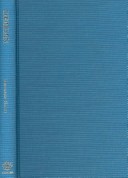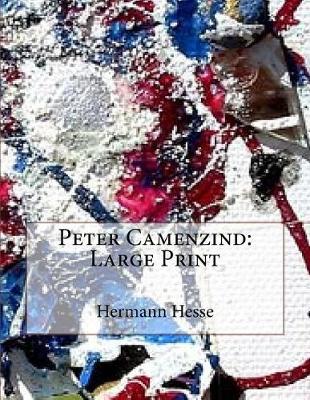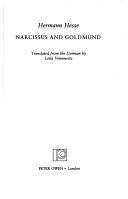Peter Owen Modern Classic
6 total works
"Demian es la obra que catapulto a Hermann Hesse a la fama. La novela, que refleja la crisis personal de Hesse, es la historia de un hombre desgarrado entre su ordenada vida burguesa y un caotico mundo de sensualidad"
The narrator of this allegorical tale travels through time and space in a search of ultimate truth. This pilgrimage to the "East" covers both real and imagined lands and takes place not only in our own time but also in the Middle Ages and the Renaissance. Again, fellow travelers are both real and fictitious--Plato, Pythagoras, Don Quixote, Tristram Shandy, and Baudelaire. Like Siddartha, Journey to the East is a timeless novel of broad appeal, particularly among younger readers, stemming from an affinity with the lasting effects of the author's own youthful rebellion against the strictures of a classical education and his pacifist instincts, combined with an easy lyricism and a well-composed symmetry of style. Part of the new look Peter Owen Modern Classics range featuring a logo crafted by graphic design icon Alvin Lustig.
PETER CAMENZIND is the novel that ensured Herman Hesse's early literary reputation. Its semi-autobiographical basis betrays an important glimpse into the development of his beliefs and concerns, in particular the struggle of an artist to achieve a personal aesthetic ideal within a materialist and uncomprehending society. Born into a Swiss village, Peter Camenzind is a introverted peasant boy who becomes a student at Zurich University where he is soon destined for some minor academic post. Yet he does not choose this path; perturbed by what he perceives to be the thankless and turbulent unrest of human nature, Peter Camenzind instead seeks his salvation through self-knowledge in the manner of a Romantic hero. But salvation is elusive; frequenting the bars and literary salons of European cities, his love affairs end as merely 'amusing' episodes, his drinking is escapist and he is further shocked by the death of the one friend whose life seemed to have some meaning. Finally he turns to St Francis of Assisi in a last attempt at self-discovery, but personal sublimation after the example of the nature-lovng saint still does not give his mind rest.
It is not until he returns to his own village to care for his dying father that he can find the path that leads back to himself. Written with a profound intellectual clarity and insight when the author was only twenty-seven, PETER CAMENZIND illuminates the very foundations of the deep humanity and searching philosophy which are the hallmarks of Hesse's later novels.
It is not until he returns to his own village to care for his dying father that he can find the path that leads back to himself. Written with a profound intellectual clarity and insight when the author was only twenty-seven, PETER CAMENZIND illuminates the very foundations of the deep humanity and searching philosophy which are the hallmarks of Hesse's later novels.
Hesse's novel of two medieval men, one quietly content with his religion and monastic life, the other in fervent search of more worldly salvation. This conflict between flesh and spirit, between emotional and contemplative man, was a life study for Hesse. It is a theme that transcends all time.
The Hesse Phenomenon “has turned into a vogue, the vogue into a torrent . . . He has appealed both to . . . an underground and to an establishment . . . and to the disenchanted young sharing his contempt for our industrial civilization.”—The New York Times Book Review
The Hesse Phenomenon “has turned into a vogue, the vogue into a torrent . . . He has appealed both to . . . an underground and to an establishment . . . and to the disenchanted young sharing his contempt for our industrial civilization.”—The New York Times Book Review
With characteristic insight and penetration, Hermann Hesse explores the destructive nature of human love. As a sensitive, disabled young composer, the narrator is drawn to a sensual singer named Gertrude through their mutual love of music. Gradually he becomes engulfed by an enduring and hopeless passion for her but, because of his fear of arousing sympathy instead of passion, he loses her. When Gertrude marries his friend, a famous singer, he is compelled to stand by and watch passively as their obsessive relationship disintegrates into tragedy.
The Prodigy, originally dating from 1905, is Hermann Hesses's bitter indictment of conventional education. It is the story of Hans Giebenrath, the brilliant young son of provincial bourgeouis in southern Germany who becomes the first boy from his town to pass into a prestigious Protestant theological college. His spirit, however, is systematically broken by his parents and teachers; over anxious about his success, they forget to consider his health and happiness. Subsiding into a fatal apathy, he is taken home for medical reasons. Here he falls in love, becomes an engineer's apprentice, learns to drink alcohol and eventually dies by drowning. Out of his attitude to the treatment that he perceived was common within the German schooling system at the turn of the century, Hesse developed his own deeply personal views on the value of Eastern education in developing the self.





